One of the fun things about raising peacocks (or peafowls) is the broad selection of foods they can eat. Since peafowls are omnivorous, they can thrive on fruits, vegetables, seeds, nuts, insects, and small-sized animals. So, you never have to think too hard about what to feed them.
Understandably, as a beginner peafowl farmer, you may only know of a few food items to feed your peafowl. But as you grow in experience, you will surely want to add more foods to the list and spice things up for your birds.
In this article, we look into 16 fruits peafowls love to eat. We talk about ways to feed these fruits to the birds, their nutritional benefits, and more.
Table of Contents
1. Apples
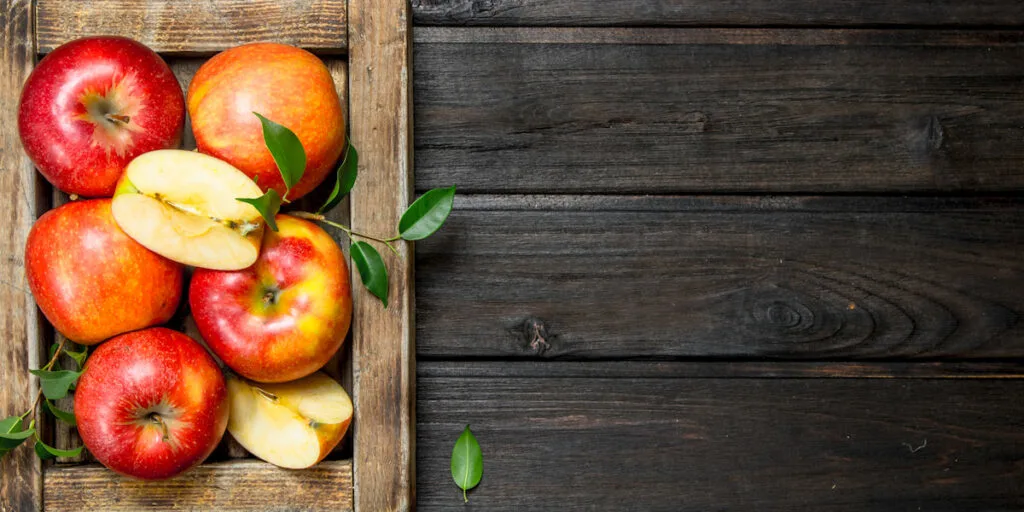
Peafowls love to eat apples. Knowing how tasty apples are, the love peafowls have for apples is not too surprising.
You can serve apples to peafowls whole or chopped. You can even mix the apples in with some other fruits. Also, if the weather is hot, you may add some blocks of ice or ice cubes to the apples.
Apples are crunchy but not too firm. So, your peafowls can peck at them with ease.
Since apples have a high water content, they are a great way to rehydrate your birds. But besides offering water, apples provide dietary fiber, potassium, antioxidants, and just enough calories for your birds.
2. Bananas
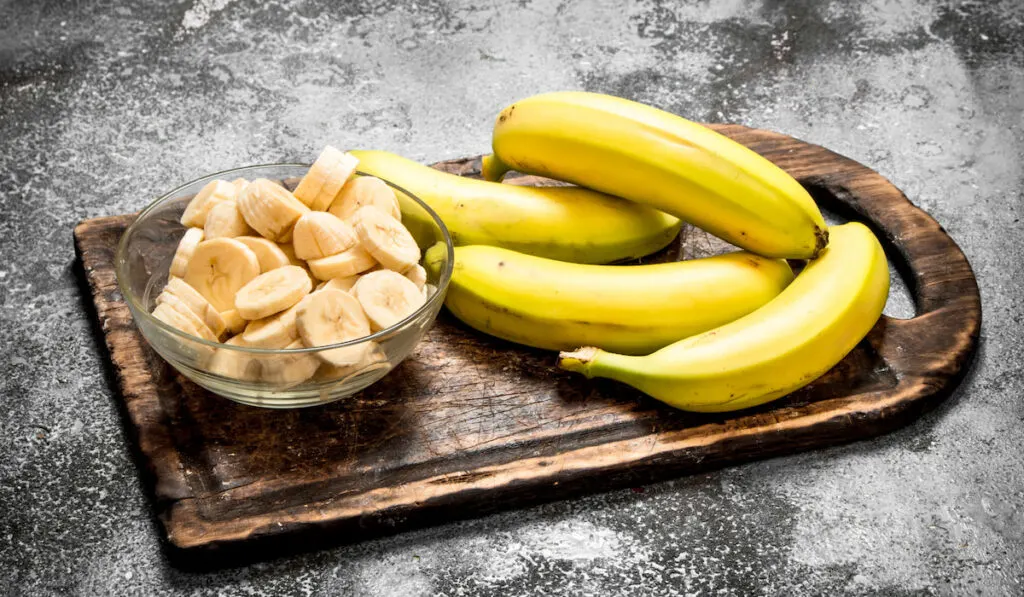
Whether ripe or unripe, you can give bananas to your peafowls. However, some people prefer giving their birds unripe bananas because they have a lower sugar content.
You may also feed banana peels to your peafowls. However, ensure such peels are free of harmful chemicals like pesticides.
When offering bananas and banana peels to your peafowls, chopping them into smaller pieces will aid digestion.
Like apples, bananas can help your birds rehydrate. But apart from that, they offer a good amount of potassium, dietary fiber, vitamin B6, iron, and magnesium. So, giving your peafowls bananas makes them happy and healthy at the same time.
3. Bell Peppers
If you offer bell peppers to your peacocks, you are likely to see them tear the fruits apart in search of the seeds. But even when doing that, they still consume some part of the fruit, if not the whole fruit.
The good news is that bell peppers are highly nutritious for your birds, whether they eat the whole fruit or just the seeds.
For one, their antioxidant content is pretty impressive. But beyond that, they contain a fair amount of dietary fiber, vitamin A, vitamin B6, vitamin E, protein, magnesium, iron, and folate.
4. Blackberries
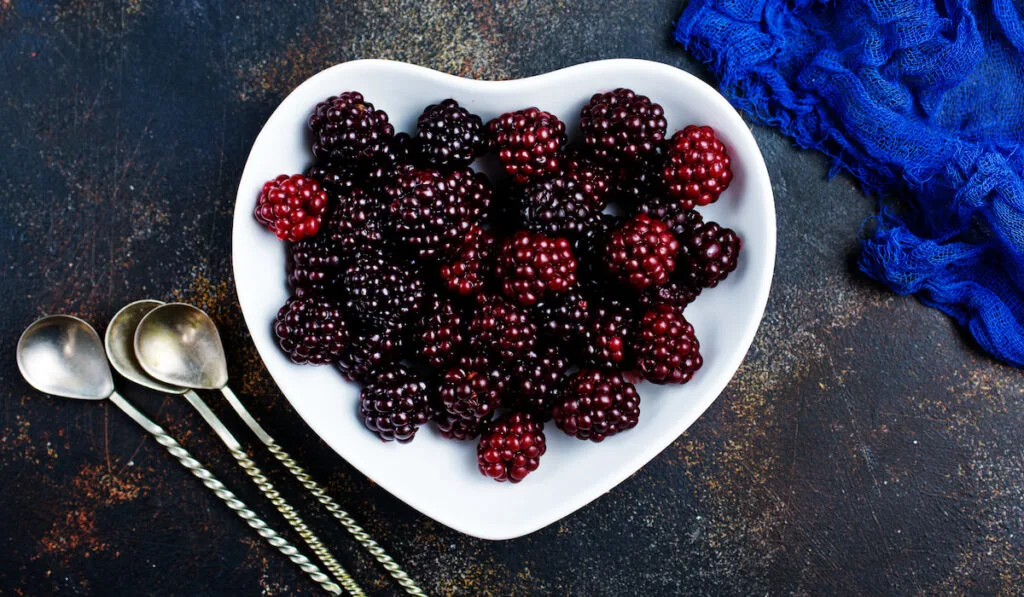
Ripe blackberries are a favorite for many peacocks. Their sweetness with a hint of tartness is undoubtedly enjoyable.
You can give your peacocks sliced or whole blackberries. Either way, they will eat the fruits whole.
About 88% of a blackberry is water. So, if you are looking to cool your birds off on a sunny day, blackberries are an ideal option.
Besides that, blackberries are chock-full of antioxidants, vitamins, minerals, and dietary fiber. So, they are a healthy option any day.
5. Cantaloupes
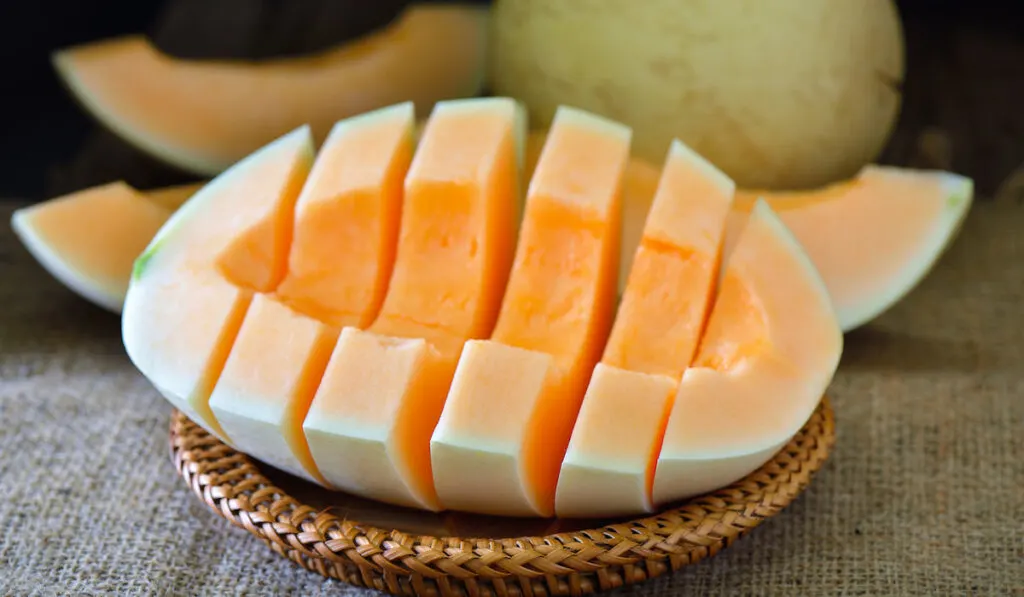
Peacocks love eating cantaloupe, especially when it still has seeds. Since the fruit is juicy, sweet, and tender, the love of peacocks for it is not surprising.
Cantaloupes are pretty juicy; they are about 90% water. So, they are the perfect treat for warm days. Besides their high water content, cantaloupes pack various beneficial nutrients. They will offer antioxidants, zinc, vitamin K, B vitamins, iron, and fiber to your birds.
6. Cucumbers
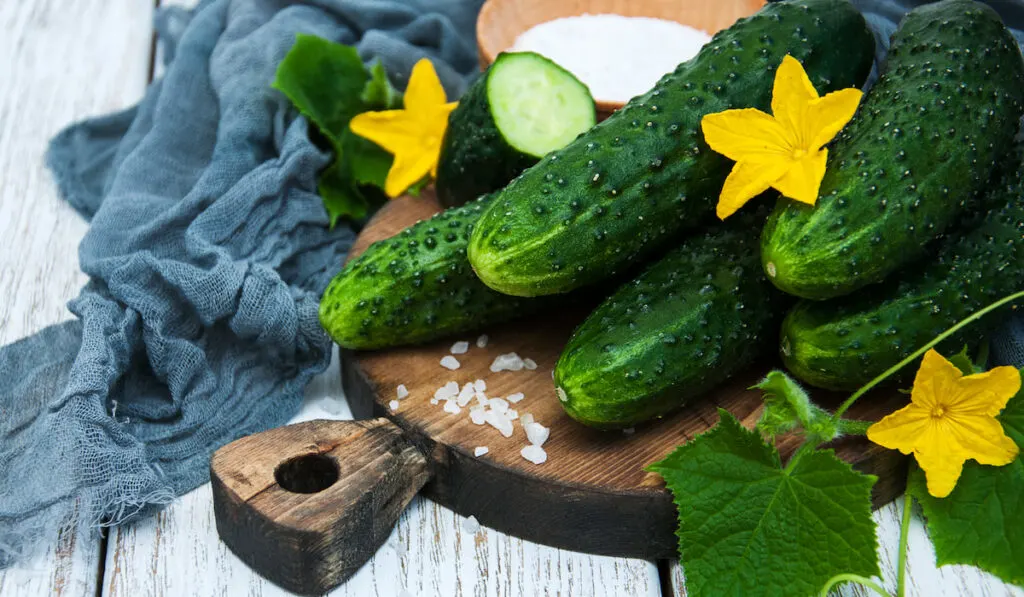
Cucumbers contain only around 1.7 g (0.05 oz) of sugar for every 100 g (3.5 oz) of fruit, making them one of the least sugary fruits. So, if your goal is to give your peafowls some fruit with low sugar content, then cucumber is an ideal option.
You can feed cucumbers to your peafowls raw, pickled, or cooked. You may offer cucumber to them sliced, diced, or unsliced. So many options come with feeding cucumbers to peafowl.
Besides being low-sugar, cucumbers are very juicy; they contain around 95% water. So, if you want to cool your birds off on a hot day, cucumbers would be perfect.
Cucumbers offer vitamin K, fiber, potassium, magnesium, and manganese. They are not only refreshing, but they are nutritious too.
7. Gallberries
Gallberries are one of many types of berries peafowls enjoy eating. You can present them to your birds whole or sliced; they will gobble them down either way.
Gallberries are somewhat bitter. So it is amusing that peacocks actually love to eat them. But then, perhaps these birds do not perceive the bitter taste of gallberries like humans do.
While they might be bitter, gallberries contain some beneficial nutrients. Top among such nutrients are antioxidants.
8. Grapes
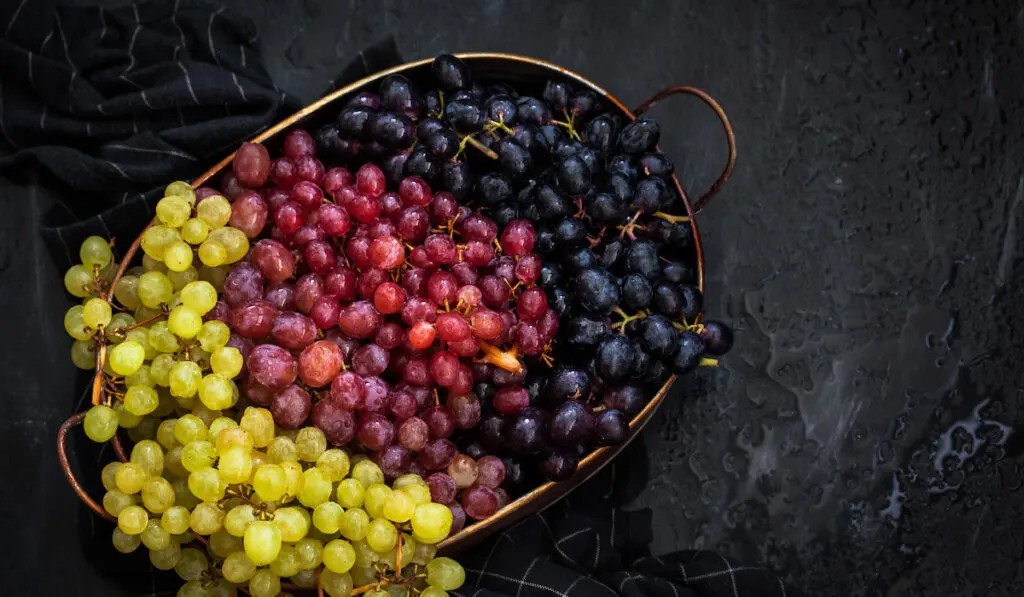
As with the other berries we have mentioned, peafowls love grapes. Give them grapes, and they will gobble the bunch down joyfully. You may want to deseed grapes before giving them to peachicks to preclude the chances of choking.
Grapes are pretty sweet, so it should not surprise you how much your birds will love them. But then, you must limit how many grapes they get. The high sugar content of grapes might be an issue if you let your peafowls eat them unchecked.
Grapes are a top source of antioxidants for your peafowl. They also offer vitamins and minerals, including vitamin B1, vitamin B2, vitamin E, potassium, vitamin K, copper, and manganese.
9. Mangoes
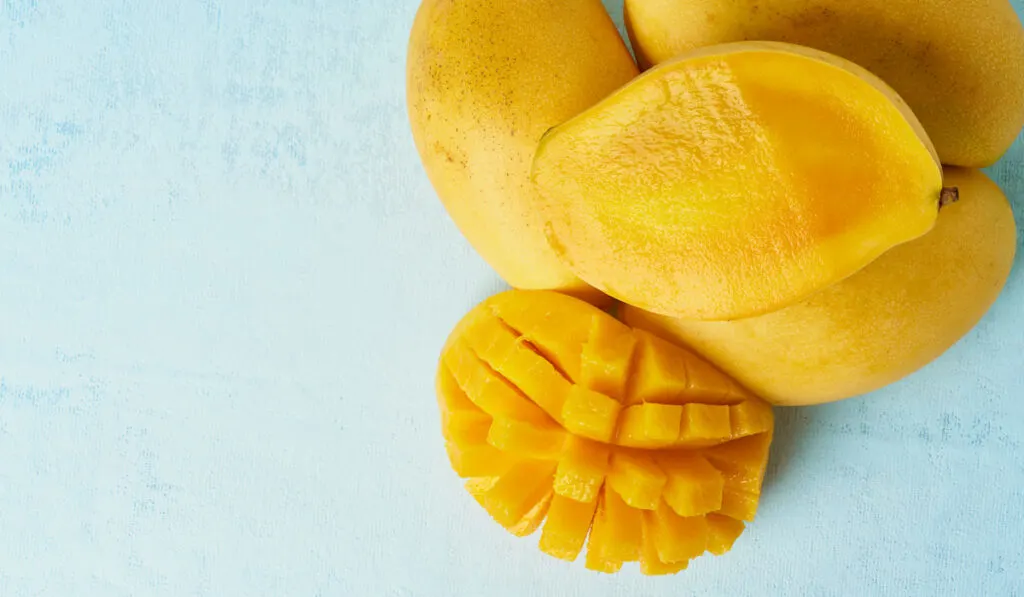
Mangoes are another favorite amongst peafowl. The taste, smell, and texture are all a delight for the elegant birds.
When offering mangoes to peafowls, you may only want to serve the fleshy part. In other words, you may want to exclude the peel and the pit from the serving. This is ideal when you are unsure if the peel is free of chemicals.
However, if you are sure of the content of the mango peel, you may serve it alongside the flesh. The high fiber content of the peel will do a lot of good to your birds’ digestive health.
Beware, mangoes have high sugar content. So, you should not give them to your peafowls regularly.
Beyond their sugar content, mangoes are highly nutritious. For one, they offer a fair amount of dietary fiber. But apart from that, they will give your birds some vitamin A, vitamin B6, potassium, and magnesium.
10. Muscadines
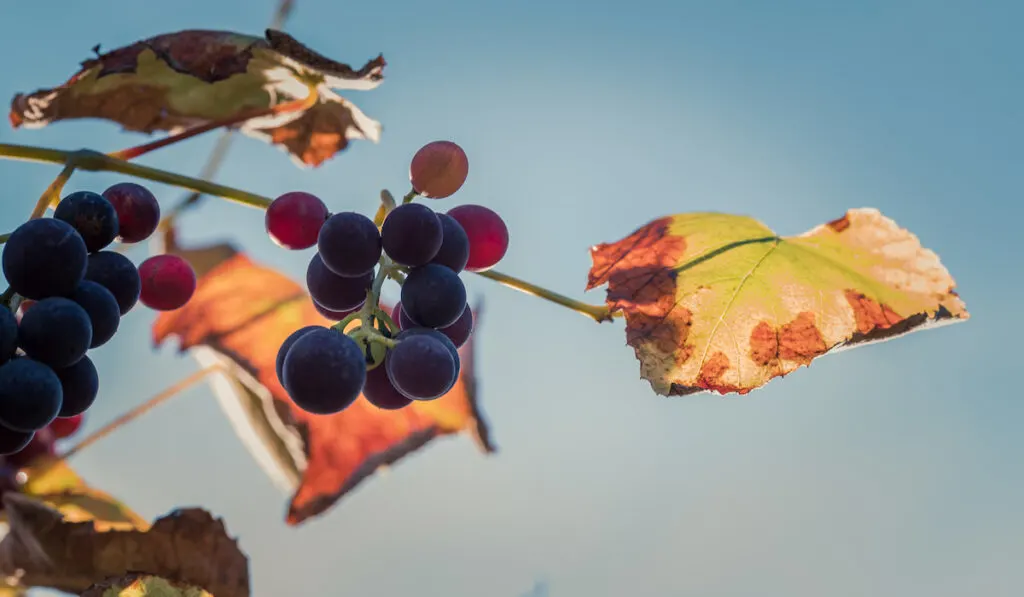
Like the other berries, muscadine grapes are one of many fruits you should consider as a treat for your peafowls.
Besides being mildly sweet, they are pretty healthy. Your birds get a considerable amount of beneficial dietary fiber when they eat muscadines. They may also get antioxidants and minerals like calcium, potassium, and phosphorus.
11. Papaya
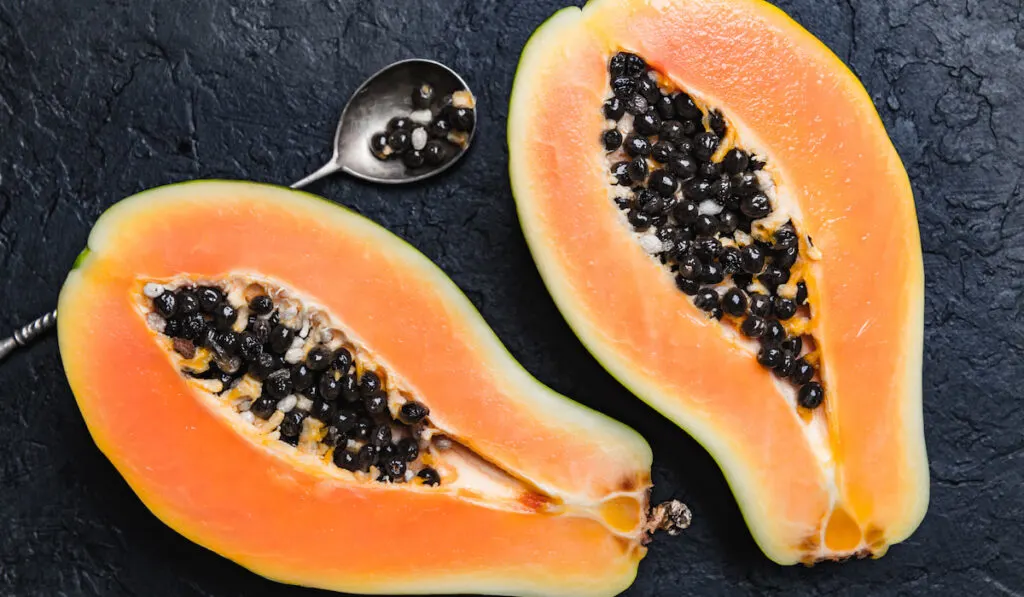
Papayas are sweet, colorful fruits. So, it turns out that peacocks love them. Since papayas are soft and fleshy, your peafowls should find it easy to peck and eat the whole fruit. But you could dice or slice the fruit for them.
When serving papaya to your birds, you may leave some seeds in. Papaya seeds may not be the tastiest, but they are beneficial to birds. So, letting your peacocks have some is good.
As with any treat, do not let your peacocks eat too much papaya. With papaya, be extra strict with servings because of the high sugar content.
Papayas offer B vitamins, fiber, copper, antioxidants, potassium, calcium, and vitamin K. Your birds will also get some protein from this fruit. So, they are a decent fruit to add to the list of treats.
12. Pears
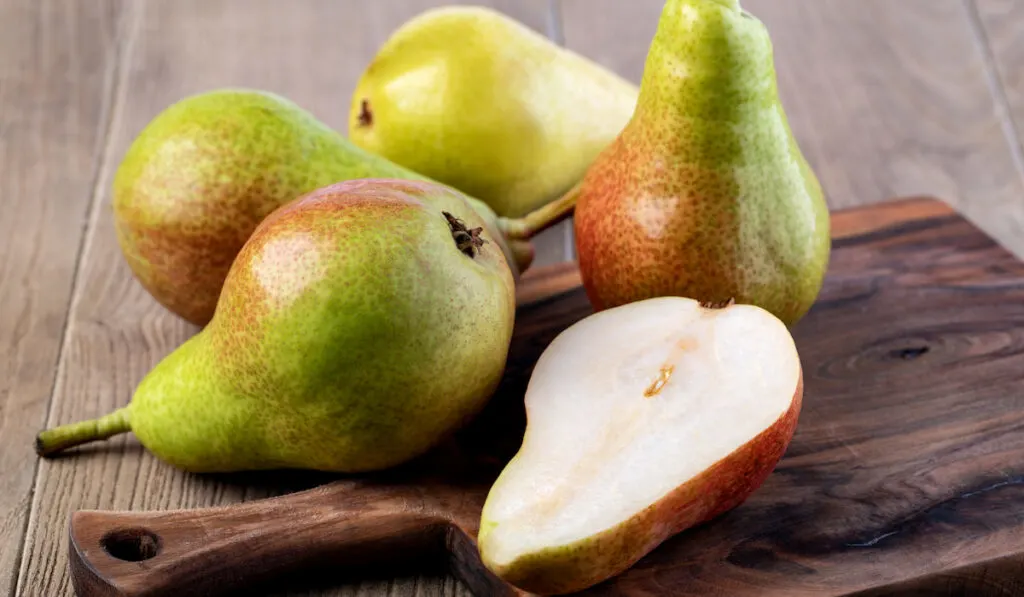
You can feed pears to your peafowl. Considering that pears are soft and crunchy, your birds will love them.
You may offer pears to your peafowl whole or diced. But either way, you should remove the seeds, as they could be a choking hazard.
Whether raw or cooked, pears are a fair source of various vitamins and minerals. They offer copper, dietary fiber, potassium, and some antioxidants. So, they can help improve your peafowls’ health.
While pears are healthy and savory to peacocks, regulate the amount you give them. The sugar content of pears is significant. So they should only be a moderate to minimal part of your birds’ diet.
13. Pineapples
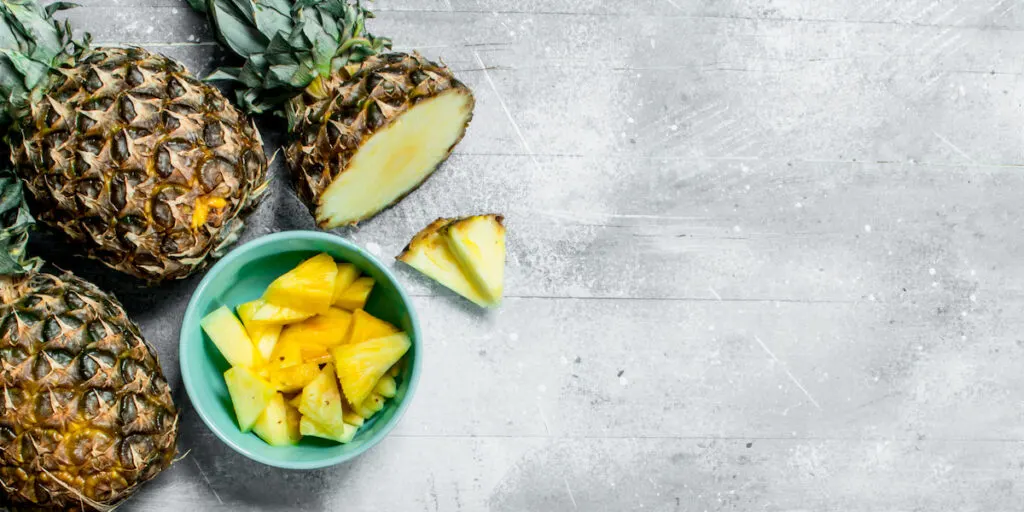
Peafowl love to eat pineapples, including the core. So, when serving pineapple to your peafowl, you can give them a mixture of the juicy flesh and the pineapple core. Mixing pineapple flesh and pineapple core might offer a better dietary balance for your birds.
While pineapple flesh is tastier and juicier, the core offers more fiber, crunchiness, and low sugar. Serve both, and your peafowls will get the best of all a pineapple can offer.
Since pineapples are juicy, you can give them to your peafowls on days when they need to rehydrate. But beyond that, pineapples are a decent source of calcium, dietary fiber, and vitamin A for your birds.
14. Raspberries
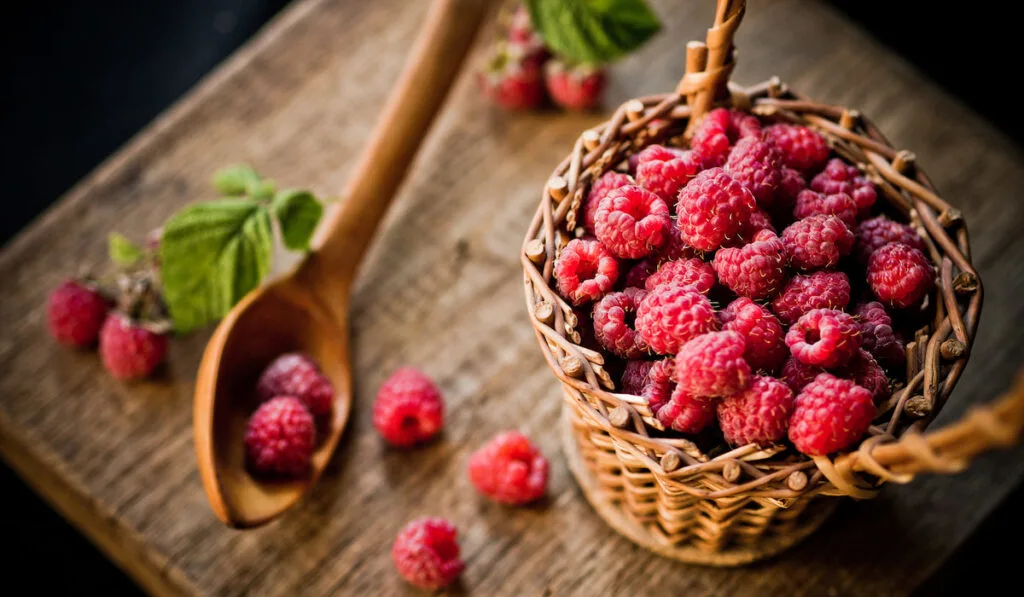
Peafowls will consume raspberries whole when available. Their love for raspberries – especially the ripe ones – adds up since raspberries are pretty sweet.
Besides being tasty, raspberries come with antioxidants, vitamin K, fiber, manganese, vitamin E, phosphorus, B vitamins, and many more nutrients. So, as long as your peafowls eat them in moderation, your peafowls should be able to enjoy the health benefits of these berries.
15. Tomatoes
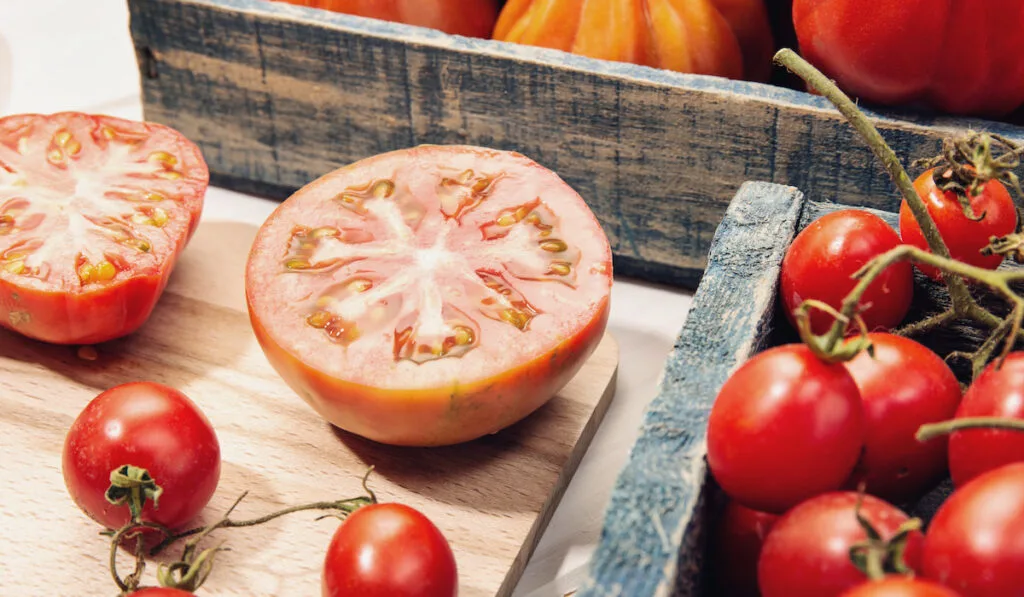
Tomatoes are pretty popular with peacocks. Thankfully, they are tasty, juicy, and healthy, so you should have no problem adding them to your peafowls’ diet.
While tomato flesh and seeds are safe for peafowls, the leaves and other green parts are not. So, when feeding tomatoes to your birds, ensure the fruit is ripe and has no greens attached to it.
16. Watermelon
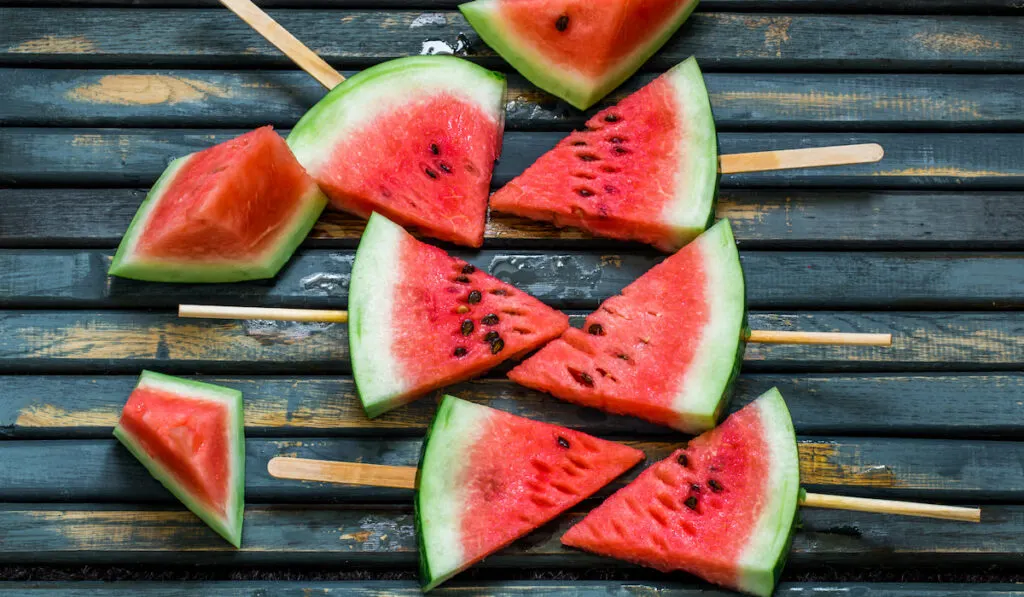
Watermelons are great for peacocks for many reasons. Firstly, watermelons are tasty, so they are enjoyable. Secondly, watermelons have high water content. So, they can promote digestion and help with rehydration on hot days.
Besides tastiness and juiciness, watermelons are chock-full of nutrients. They have various nutrients – from antioxidants and dietary fiber to vitamins and minerals.
Resources
- https://modernfarmertips.com/what-do-peacocks-eat/
- https://farmingmethod.com/what-do-peacocks-eat-drinks
- https://animals.mom.com/skunks-eat-11008.html
- https://feedingnature.com/what-do-peacocks-eat/
- https://www.healthline.com/nutrition/foods/apples
- https://farmhouseguide.com/can-peacocks-eat-bananas/
- https://www.healthline.com/nutrition/foods/bananas
- https://farmhouseguide.com/what-fruits-can-chickens-eat
- https://www.webmd.com/diet/health-benefits-bell-peppers
- https://www.aquaidwatercoolers.co.uk/water-rich-winter-fruit-the-ubiquitous-blackberry
- https://www.diabetes.co.uk/blog/2015/09/sugar-carbs-fruits-most-least
- https://www.webmd.com/food-recipes/cucumber-health-benefits
- https://treasurecoastnatives.wordpress.com/2012/01/14/coffee-tea-or-gallberry/
- https://www.healthline.com/nutrition/benefits-of-grapes
- https://www.healthline.com/health/food-nutrition/are-mangoes-good-for-you
- https://en.wikipedia.org/wiki/Vitis_rotundifolia#cite_note-ars-15
- https://farmhouseguide.com/fruits-and-vegetables-for-peacocks
- https://www.ehow.co.uk/list_7456436_kind-fruits-do-peacocks-eat_.html
- https://guide.michelin.com/en/article/dining-in/7-types-of-pears-to-sink-your-teeth-into
- https://www.healthline.com/nutrition/benefits-of-pears
- https://thrivecuisine.com/taste-test/what-do-raspberries-taste-like
- https://www.healthline.com/nutrition/raspberry-nutrition
